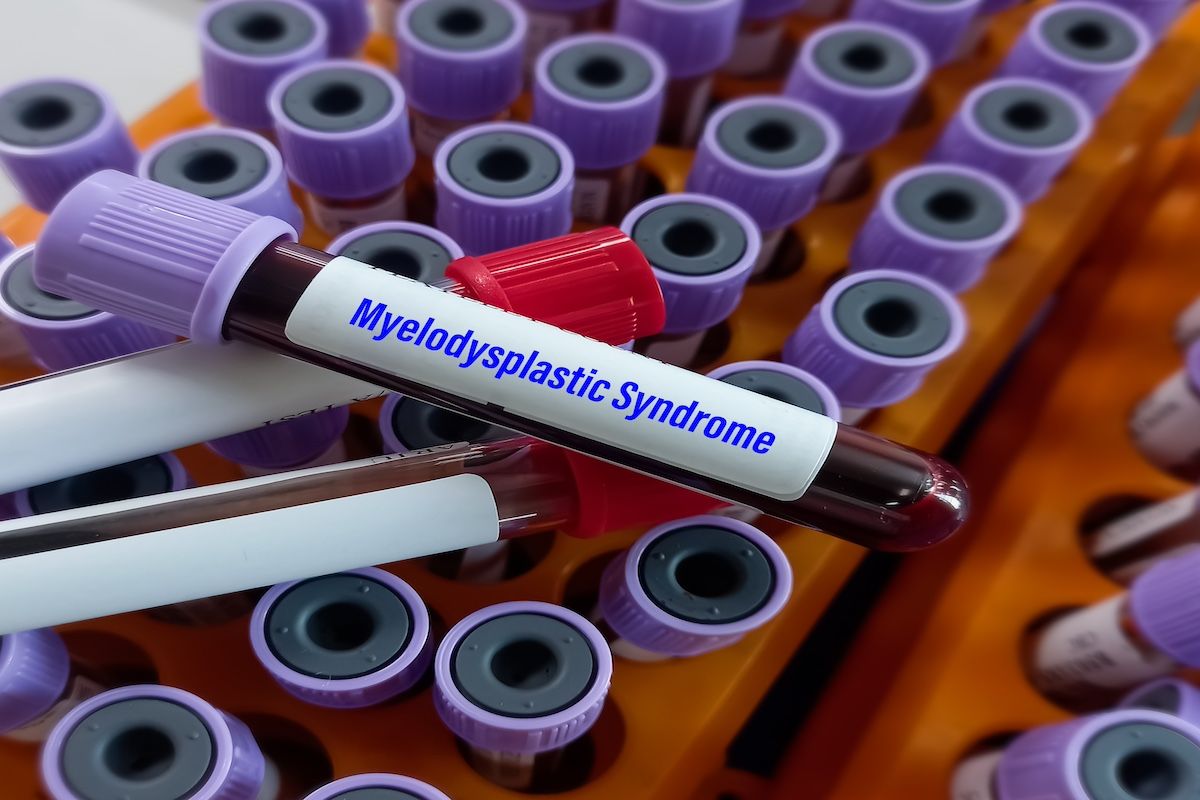News
Article
ESA Treatment Improves OS in Lower-Risk MDS
Author(s):
Key Takeaways
- ESA treatment in lower-risk MDS patients is linked to improved overall survival and quality of life.
- Avoiding red blood cell transfusions is associated with significantly better health-related quality of life.
Erythropoiesis-stimulating agent (ESA) treatment before or early after regular transfusion therapy improved overall survival (OS) In lower-risk myelodysplastic syndromes (MDS), a new study found.
In lower-risk myelodysplastic syndromes (MDS), erythropoiesis-stimulating agent (ESA) treatment before or early after regular transfusion therapy was linked with improved overall survival (OS), according to a study published in The Lancet Haematology.1
The observational study, which used data from the European MDS (EUMDS) registry, also found that avoiding red blood cell transfusion (RBCT) was associated with significantly better health-related quality of life (HRQOL). The findings build upon a previous study that showed longer survival among patients treated with ESAs vs those who received RBCT,2 adding data for more patients and longer follow-up time to evaluate survival and HRQOL.1
ESA treatment before or early after regular transfusion therapy improved OS In lower-risk MDS, a new study found. | Image credit: MdBabul - stock.adobe.com

ESAs are recommended by several guidelines as a first-line therapy for anemia in patients with MDS, the study authors noted. And while evidence suggests that ESAs increase hemoglobin concentrations and extend the time to regular transfusion need, the effects of ESA exposure on OS and HRQOL have not been explored. The new study included patients exposed to ESAs with or without RBCT.
“It is well-established that anemia and, in particular, transfusion need in myelodysplastic syndromes is associated with impaired survival and quality of life, as well as that ESA treatment prevents or reduces the frequency of transfusions and improves quality of life,” the authors wrote. “However, these facts do not allow for the interpretation that intervention with ESA prolongs overall survival, partly as reasons for anemia-associated reduced survival in myelodysplastic syndromes are multifactorial and incompletely understood.”
The study included 2448 patients in the EUMDS registry, which is a noninterventional, longitudinal, real-world registry enrolling adult patients diagnosed with lower-risk MDS—defined as International Prognostic Scoring System low or intermediate-1—in 16 European countries and Israel. The ESA-exposed group included 1183 patients, and the ESA-unexposed group included 1265 patients. All patients were diagnosed before July 1, 2019, and the overall cohort was 62.1% male (n = 1520) and 37.9% female (n = 928). After eligibility criteria were applied and propensity matching was done, the ESA-unexposed group included 426 patients, and the ESA-exposed group included 744 patients.
At a median follow-up of 3.9 years (IQR, 1.6-6.5), median OS in the ESA-exposed cohort was 44.9 months (95% CI, 40.2-50.5) vs 34.8 months (95% CI, 28.6-39.2) in the ESA-unexposed cohort. The absolute difference was 10.1 months (HR, 0.70; 95% CI, 0.59-0.83; P < .0001).
Based on EQ-5D-3L and Visual Analog Scale (VAS) responses, HRQOL was significantly better among patients without RBCT regardless of ESA exposure status. In a linear mixed effect model of EQ-5D-3L index score, the RBCT coefficient was –0.04 (95% CI, –0.06 to 0.03; P < .0001), and in a linear mixed effect model of VAS, it was –4.57 (–6.02 to –3.13; P < .0001). The authors noted that, importantly, HRQOL did not deteriorate over time among patients exposed to ESA treatment who did not undergo RBCTs.
“It is unlikely that a prospective placebo-controlled trial designed to assess long-term survival in patients with lower-risk myelodysplastic syndromes will be performed,” the authors wrote. “The present study provides evidence that ESA treatment prolongs survival and improves quality of life in patients with anemia and myelodysplastic syndrome. The clinical implication of this study is that ESA treatment should be recommended at the onset of or early after the start of symptomatic anemia with or without transfusions.” They added that the data may impact policies and clinical practice in countries without access to ESAs or where reimbursement only covers ESAs after patients require regular transfusions.
The study was limited by its design, as it was not a prospective randomized placebo-controlled trial and used heterogeneous patient material, the authors noted. However, the variation in the included patients is more similar to real life relative to a randomized study, they added. Considering the treatment has been in use for more than 30 years, a large, randomized, controlled trial to evaluate OS is unlikely, and propensity scoring is a well-established option to factor in between-group differences.
“We conclude that ESA exposure appears to provide a benefit for patients with lower-risk myelodysplastic syndromes by significantly delaying the onset of permanent transfusion dependency,” the authors wrote. “Moreover, ESA exposure was also associated with improved overall survival and quality of life. Additionally, to our knowledge, neither this large registry analysis nor any previous phase 2 or phase 3 trial have given any safety concern of ESA treatment.”
References
1. Garelius HKG, Bagguley T, Taylor A, et al. Survival and quality of life in patients with lower risk myelodysplastic syndromes exposed to erythropoiesis-stimulating agents: an observational cohort study. Lancet Haematol. 2025;12(2):e128-e137. doi:10.1016/S2352-3026(24)00350-8
2. Garelius HK, Johnston WT, Smith AG, et al. Erythropoiesis-stimulating agents significantly delay the onset of a regular transfusion need in nontransfused patients with lower-risk myelodysplastic syndrome. J Intern Med. 2017;281(3):284-299. doi:10.1111/joim.12579




